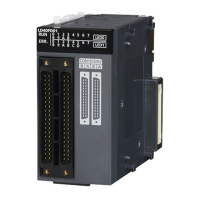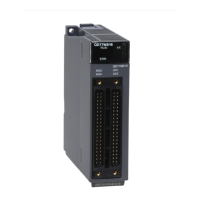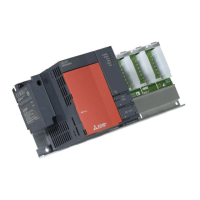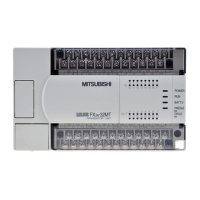121
CHAPTER 12 COMMUNICATIONS USING A FIXED BUFFER
12
12.2 Communication Structure
12.2 Communication Structure
This section describes the structure of communications using a fixed buffer.
(1) Data flow
In communications using a fixed buffer, data is sent/received using dedicated instructions.
• Sending data: BUFSND instruction
• Receiving data: BUFRCV instruction or BUFRCVS instruction
When the "Procedure Exist" control method is used, the CPU module and the connected device communicate on
a 1:1 basis. The CPU module sends/receives data to/from the connected device while handshaking with the
connected device.
When the "No Procedure" control method is used, the CPU module sends/receives data to/from the connected
device in a non-procedural manner.
(2) Connected devices where data communications can be performed
Data communications can be performed with the following connected devices.
• Devices in Ethernet where an E71 is connected
• Devices connected with the router relay function
When using each fixed buffer (numbers 1 to 16) as shown in the figure below, set the destination devices and
usage conditions (e.g. for sending/receiving and "Procedure Exist"/"No Procedure") in the open setting to fix a
connected device to each buffer.
Note the following points when changing connected devices.
• During TCP/IP communications, a connected device can be changed only when the connection with the
connected device is not established (when Open completion signal is off).
• During UDP/IP communications, a connected device can be changed regardless of the status of connection
with the connected device.
Connected device
E71
BUFSND instruction
BUFRCV instruction
No.1
No.2
No.3
No.4
No.16
Fixed buffer
CPU module
Connected device 1
Connected device 8
Connected device 28
Fixed buffer No.16
Fixed buffer No.2
Fixed buffer No.3
Fixed buffer No.1
To send data to the connected device 28
To receive data from the connected device 1
To receive data from the connected device 8
To send data to the connected device 1

